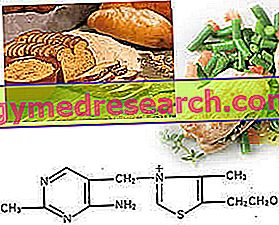
Nowadays, much importance is given to the amount of dietary fiber present in foods, especially those based on flour. This is due to the fact that, in the absence of molecules that reduce the speed of intestinal absorption (such as fibers), carbohydrates in pasta and bread (in considerable portions) tend to excessively increase insulin levels (insulin in the blood). The latter, it is known, is an anabolic hormone which, among its various functions, promotes the hepatic synthesis of fat and the consequent deposit in adipose tissue.
Ultimately: too much refined bread and too much pasta make you fat. From this awareness, therefore, the tendency to consume whole foods arose, hypothetically endowed with a greater satiating power, a lower caloric intake and a lower insulin impact.
Alas, this conviction has been gradually distorted, maturing in the principle according to which: between the refined products and the integral ones there is a not only significant but unbridgeable quality gap.
"Is that really true? Does whole wheat pasta and bread help maintain physiological body weight or even promote weight loss? "
This is the question the architects of the study tried to answer: " Wholegrain vs. refined wheat bread and pasta. Effect on postprandial glycemia, appetite, and subsequent ad libitum energy intake in young healthy adults ”.
This is an experimental cross-over randomized trial that observed the reactions of 16 young adults to the consumption of 4 different foods based on wheat flour. The foods, eaten one at a time (to be able to carry out the survey), were: wholemeal pasta, white pasta, whole wheat bread and white bread. The parameters of comparison were: post prandial glycaemia, residual appetite and energy intake in eating the food until the achievement of satiety (eating "ad libitum", that is until satiety).
The test meals were administered in the morning and on an empty stomach; these consisted of portions of individual foods containing (initially, before the ad libitum) 50g of carbohydrates.
The level of appetite and glycaemia were then classified after 180 'from consumption, also measuring the total energy intake up to the achievement ad libitum.
The glycemic response was similar between refined and integral products; however, pasta-based foods, compared to bread-based foods, have reached less important blood glucose levels. Furthermore, the white paste has shown a slightly lower glycemic index than white bread. Wholemeal bread, but not whole wheat pasta, increased satiety and reduced appetite compared to white food. However, the total energy until satiety was reached was not different.
It is therefore correct to prefer wholemeal bread and pasta compared to refined ones but, to be honest, this unique trick certainly does not represent a solution to maintaining the physiological weight or losing weight in case of overweight.



